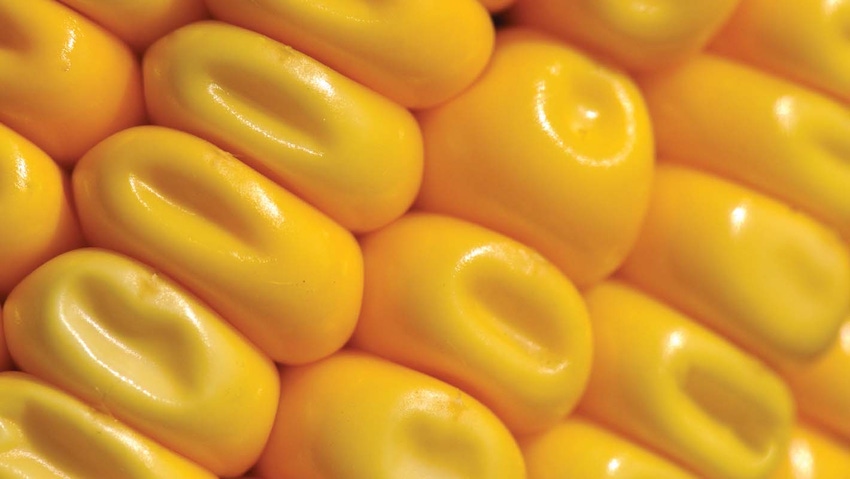
Corn traits of the future will be more complex genetically and will enhance existing products, such as second-generation herbicide-tolerant and insect-resistant traits. Companies will continue to look at drought tolerance and nitrogen utilization. Dow AgroSciences, Monsanto, Syngenta, Pioneer Hi-Bred, and Bayer CropScience offer glimpses into their trait pipelines.

Corn technology benefited from a decade of concentrated trait research. The next decade will be devoted to developing products that are more complex genetically and to enhancing existing products. All major seed companies have substantial corn product pipelines to meeting growers’ needs in the future.
Dow AgroSciences
Dow AgroSciences has “the most robust pipeline in our company’s history,” says Ben Kaehler, general manager for seed affiliates and traits licensing.
The Enlist Weed Control System, pending regulatory approval, should be available in 2013. It will provide tolerance to both a new 2,4-D product and FOP herbicides in corn. Kaehler says it will be stacked with Roundup Ready and SmartStax. “This system is very tangible and we are proving them in the field, not just the lab,” he says.
The system offers growers additional herbicide tolerance for corn to help address weed problems in the field. “We see more and more weeds getting tougher to control with glyphosate,” Kaehler says. “We have talked to growers, and they don’t want to give up the convenience of glyphosate.”
Drought tolerance is on the agenda at Dow AgroSciences. “For drought, we have some natural genetics that provide better performance under drought conditions,” Kaehler says. “We also are working on transgenic drought tolerance [solutions] as well and do see some promising leads.”
Nitrogen utilization also is getting attention. “We are working on nitrogen utilization efficiency to improve yields either with the same amount of nitrogen or possibly reduce some of the nitrogen use and maintain high yields,” Kaehler says. “Nitrogen utilization efficiency project is not only in trait technology, but we have products today, like N-Serve and Instinct nitrogen stabilizer, to help manage nitrogen utilization.
“We will combine some things we have from the crop protection business with new products in nitrogen utilization in trait technology,” he adds. “Again, it is something early in the development process. We have some pretty interesting leads but [products] won’t be available for a number of years.”
Monsanto
Genuity SmartStax RIB Complete (refuge-in-a-bag technology) is the most recent product out of the Monsanto corn pipeline. But more new products are on the way. Roy Fuchs, Monsanto oilseeds technology lead, says the company is providing more options with SmartStax to give growers a choice of different corn products.
Drought-tolerant corn is being co-developed with BASF and is in the later stages of development. A first-generation product is expected to help buffer the stress of water limitation that occurs in more droughty climates, such as the western Great Plains on dryland acres. The second-generation product is geared to the central Corn Belt and will offer yield stability for intermittent drought. The first-generation product is undergoing large-scale testing and is awaiting global regulatory approvals. On-farm trials are expected to begin in 2012, with the anticipated launch date for the first-generation product in the years that follow.
Dicamba- and glufosinate-tolerance hybrids are the horizon at Monsanto. The company is working on these herbicide-tolerant traits in corn to offer more control over herbicide-resistant weeds. Also being considered is a product tolerant to FOPs, a low-cost tankmix partner for postemerge control of grasses.
Nitrogen utilization is under development through a collaboration with BASF.
Corn borer III and CRW III products are also well into the research pipeline. Monsanto states that the two products will offer more control against corn borer and corn rootworm while being more durable and maintaining the reduced refuge options.
Syngenta
The Syngenta seed pipeline when fully released has peak potential sales of more than $2 billion. Here are some of the products in the pipeline.
This year Syngenta introduced Agrisure Artesian technology, its water optimized line, with one hybrid available in limited quantities. The company plans to increase that portfolio and stack it with other Syngenta traits.
“We are looking at up to 15% yield preservation under moderate to severe moisture stress,” says Jill Wenzel, product lead, commercial traits. She reports that the Artesian hybrid planted in the western Corn Belt appears to be performing well where the early wet weather turned dry.
The Artesian technology relies on native traits developed through a very precise gene blueprinting process. Wenzel says it allows researchers to select versions of genes that help the plant handle moisture stress “throughout the growth stage from early season all through late season. These give the plant many protective tools all along the way.
“Growers are so excited about this,” she adds. “The biggest questions are, When can I get it and how much can I have? Of course the follow-up question is, Do you have anything that can handle too much water?”
Next-generation rootworm hybrids are in the late development stage of the pipeline with introduction into the market in approximately 2014, pending regulatory approvals. The name of the new hybrid line will be announced soon.
“Initial work is very encouraging,” Wenzel says. “We are seeing the highest level of control ever tested against corn rootworm with the technology. It has the spectrum of a rootworm trait with improved consistency and efficacy.”
Nitrogen utilization work is further out in the pipeline, along with additional water optimization technology.
Pioneer Hi-Bred
Pioneer Hi-Bred’s pipeline features products derived from both native and transgenic traits. John Pieper, U.S. corn product strategy, says this pipeline is enhanced compared to years ago and the enhancements will continue.
Optimum Aquamax products, Pioneer’s first hybrids for water-limited environments, entered the market in a limited launch this year. “Early reports from growers in western Corn Belt where the launch took place say the hybrids are looking very good,” Pieper says.
The company’s next-generation drought-tolerance product will include a transgenic approach and should launch mid to late decade. These products “will combine native and transgenic traits to further enhance tolerance to drought stress during specific growth stages,” Pieper adds. This approach of transgenic traits added to native traits in Optimum Aquamax will deliver robust drought tolerance.
Pioneer has expanded its locations for research on drought tolerance. Pieper says there is a great need to study the hybrids under different types of drought stress — from flowering to grain fill and beyond.
Nitrogen use efficiency research is in the early stages of development. Currently, Pioneer is setting up research locations in different environments to see how transgenic events utilize nitrogen in these locations.
“The main challenge is to find an event or gene that will effectively influence a corn plant’s ability to maintain yield with less nitrogen or enhance yield with same nitrogen,” Pieper says.
He expects that hybrids from this research will not be available until the end of the decade.
Lepidopteran/coleopteran molecular stack is “both above- and belowground stack, a molecular stack, that’s coming down the pipeline and has no brand yet,” Pieper says. The molecular stack allows Pioneer to efficiently and more rapidly “bring two insect traits into one event to enhance yield,” Pieper explains.
The insect stack is targeted for launch in the middle of the decade.
Next-generation lepidopteran-resistant traits are in the pipeline. “We’re looking to further enhance efficacy, broaden the spectrum and add new modes of action,” Pieper says.
Next-generation coleopteran resistance is under research so rootworm traits “will have additional modes of actions and enhanced efficacy,” he adds. These traits are a little further back in the pipeline.
Hybrids produced using Seed Production Technology (SPT) from Pioneer are ready to launch next year. The SPT process is a proprietary approach to seed production that will dramatically increase the efficiency of hybrid seed production. Production fields with this process will not need detasseling.
“The exciting thing about the technology is that it brings additional supply reliability by increasing yields 15 to 20% in seed production fields because the plants have not incurred the damage they do during detasseling,” Pieper explains. “It won’t end detasseling, but it will greatly reduce the number of fields that will be detasseled.”
Regarding all the students who rely on detasseling for summer work, Pieper says, “There will still be plenty of season job opportunities detasseling, as well as continued expansion of research jobs.”
Bayer CropScience
Bayer CropScience is working with Monsanto and Pioneer Hi-Bred to ensure that LibertyLink is part of each company’s refuge-in-a-bag concept, according to Andy Hurst, product manager for herbicide-tolerant traits. “A key aspect is to assure a LibertyLink component is part of the non-Bt component of the package,” he explains. “We’re excited to see the commitment to ensure that growers will have flexibility to use both Ignite and glyphosate on these new products like SmartStax and Optimum AcreMax products.”
Hurst adds that this will give growers a means to preserve the “utility of glyphosate” by rotation of nonselective modes of action (Ignite and glyphosate) as well as selective modes of action on crops to either manage weed resistance or to avoid it.
In other corn research, Bayer “will continue to look for ways to collaborate closely with the key germplasm originators in the corn market in regards to traits of interest,” he says.
About the Author(s)
You May Also Like





